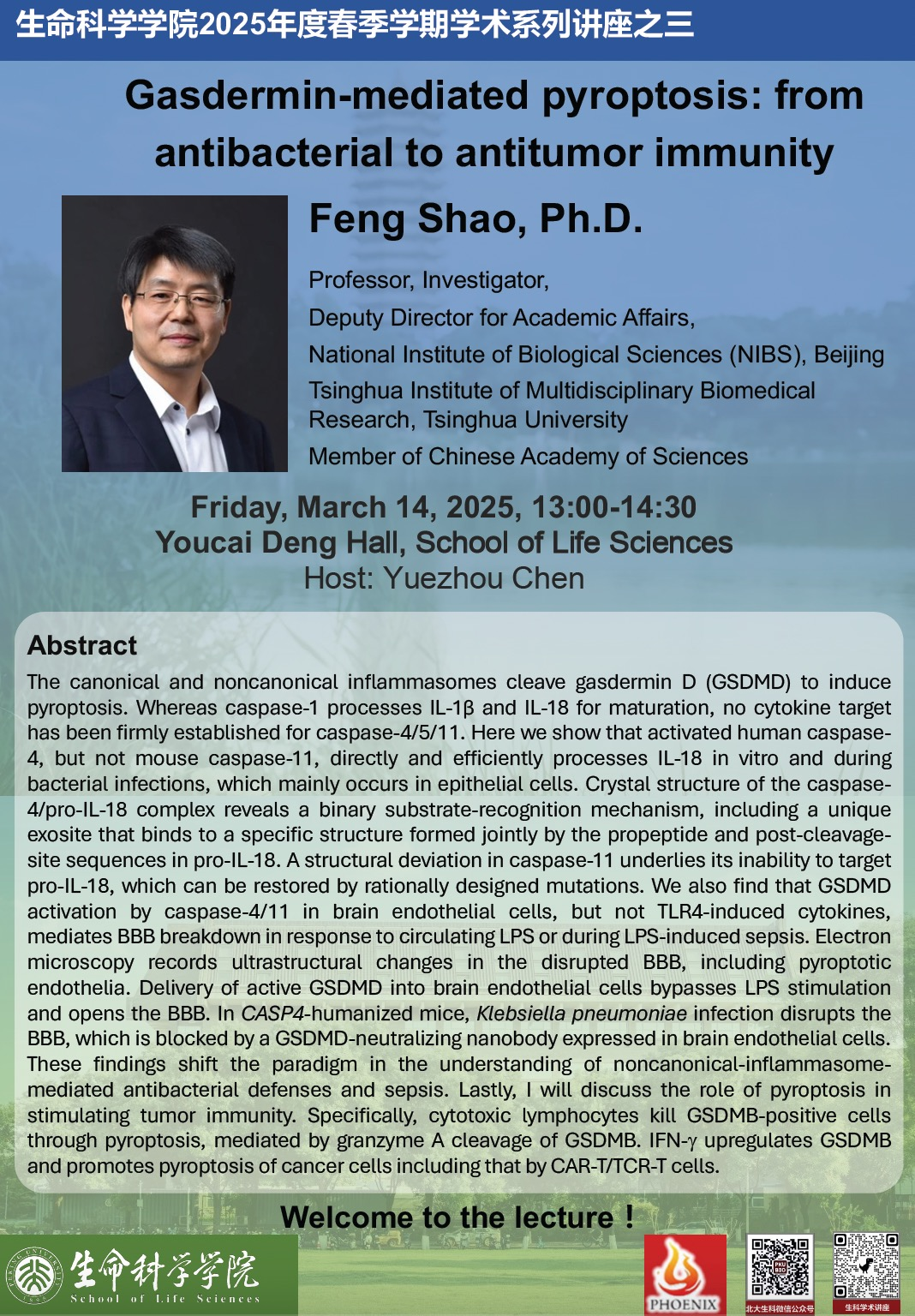
Time: 13:00-14:30, March 14, 2025, GMT+8
Venue: Youcai Deng Hall, School of Life Sciences, PKU
Abstract:
The canonical and noncanonical inflammasomes cleave gasdermin D (GSDMD) to induce pyroptosis. Whereas caspase-1 processes IL-1β and IL-18 for maturation, no cytokine target has been firmly established for caspase-4/5/11. Here, we show that activated human caspase-4, but not mouse caspase-11, directly and efficiently processes IL-18 in vitro and during bacterial infections, which mainly occurs in epithelial cells. The crystal structure of the caspase-4/pro-IL-18 complex reveals a binary substrate-recognition mechanism, including a unique exosite that binds to a specific structure formed jointly by the propeptide and post-cleavage site sequences in pro-IL-18. A structural deviation in caspase-11 underlies its inability to target pro-IL-18, which can be restored by rationally designed mutations. We also find that GSDMD activation by caspase-4/11 in brain endothelial cells, but not TLR4-induced cytokines, mediates BBB breakdown in response to circulating LPS or during LPS-induced sepsis. Electron microscopy records ultrastructural changes in the disrupted BBB, including pyroptotic endothelia. Delivery of active GSDMD into brain endothelial cells bypasses LPS stimulation and opens the BBB. In CASP4-humanized mice, Klebsiella pneumoniae infection disrupts the BBB, which is blocked by a GSDMD-neutralizing nanobody expressed in brain endothelial cells. These findings shift the paradigm in the understanding of noncanonical inflammasome-mediated antibacterial defenses and sepsis. Lastly, I will discuss the role of pyroptosis in stimulating tumor immunity. Specifically, cytotoxic lymphocytes kill GSDMB-positive cells through pyroptosis, mediated by granzyme A cleavage of GSDMB. IFN-γ upregulates GSDMB and promotes pyroptosis of cancer cells, including that by CAR-T/TCR-T cells.
Source: School of Life Sciences